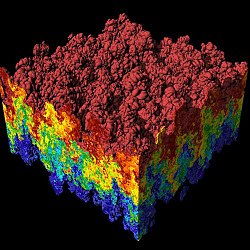| Computational physics |
|---|
 |
Collaborative Computational Project Q (CCPQ) was developed in order to provide software which uses theoretical techniques to catalogue collisions between electrons, positrons or photons and atomic/molecular targets. The 'Q' stands for quantum dynamics. This project is accessible via the CCPForge website, which contains numerous other projects such as CCP2 and CCP4. The scope has increased to include atoms and molecules in strong (long-pulse and attosecond) laser fields, low-energy interactions of antihydrogen with small atoms and molecules, cold atoms, Bose–Einstein condensates and optical lattices. [1] CCPQ gives essential information on the reactivity of various molecules, and contains two community codes R-matrix suite and MCTDH wavepacket dynamics. [2]
The project is supported by the Atomic and Molecular Physics group at Daresbury Laboratory, which supports research in core computational and scientific codes and research. [3]
This project is a collaboration between University College London (UCL), University of Bath, and Queen's University Belfast. The project is led by Professor Graham Worth who is the Chair, alongside Vice-Chairs Dr Stephen Clark and Professor Hugo van der Hart. Quantemol Ltd is also a close partner of the project. The project is a result of the previous Collaborative Computation Project 2 (CCP2), and is an improved version of this older project. CCPQ (and its predecessor CCP2) have supported various incarnations of the UK Molecular R-matrix project for almost 40 years. [1]